Public Comment on Shoreline Master Program open until Dec.8
— by Margie Doyle —
San Juan Island residents dominated the three hours of public testimony at the Shoreline Master Program public hearing on Nov. 30 in front of the County Council and staff in Friday Harbor, along with significant input from the Friends of the San Juans, Friday Harbor Labs, attorneys, planners, and permit advisors. While a great portion of the hearing aired views about the prospect of Snug Harbor Marina and Resort being designated a Port Marine Transportation (PMT) zone, the ramifications of the proposed update throughout the 408 miles of county shoreline were apparent as speakers from Lopez, Orcas and Shaw Islands also testified.
In some house-cleaning before the hearing, Council Chair Bob Jarman noted that all email comments will be included in the record and Council Member Rick Hughes clarified that written comments could be made electronically (by email) as well as mailed or hand-delivered. Hughes later confirmed that the Lopez meeting on Tuesday, Dec. 1 and the Orcas meeting on Thursday, Dec. 3 will be open for public comments as well.
Linda Kuller, Planning Dept. Deputy Manager for the Shoreline Master Program (SMP) update and County Planner Colin Maycock addressed council questions during the public hearing. The Council has scheduled final hearing of the SMP for Tuesday, Dec. 15 during its regular session.
Hughes also clarified with Maycock that where there are stricter regulations, than those specified in the Shoreline Master Program, written into subarea plans (Such as Waldron and Eastsound), then the more restrictive regulations will take precedence.
He also pointed out that some of the tables are not current, for example the restoration table which shows that the Deer Harbor Bridge Project is completed in 2015.
Attorney Kyle Loring for the Friends of the San Juans spoke to the two purposes of the SMP, which was last updated 17 years ago — to protect shoreline property and ecological interests along the 408 miles of shoreline in the county. He noted the decline in populations of whales and salmon, and observed that the SMP as revised, seems “to increase development of the shoreline and significant de-vegetation, [contributing to the] decrease of shorelines.” He criticized the proposed rollback of restrictions on such matters as:
- locating essential public facilities in geological hazardous areas
- oil pipelines, chemicals and hazardous materials
- prevention of eelgrass destruction
“There’s a lot of missed opportunities here, [that will have] critical impact,” Loring said. He asked that if the Council did not adopt the Friends of the SJs recommendations, that it keep the existing SMP. Loring also stated the observation, repeated during the morning, that a 19-day comment period during which there were two federal holidays and two local power outages was not adequate time to comment on the Shoreline Master Plan, nor did it meet state standards.
San Olson from Lopez said that Washington State Laws to maintain and protect shoreline resources include policies and regulations to assure no net loss, and that are “reasonably anticipatory of future developments.” He questioned why only 10 miles of shoreline are documented as protected for feeder fish, salmon restoration or feeder bluffs, and asked, “Why not place all in the most protective classifications?
“I expected the county to have a better appreciation for shoreline. It would be tragic if your legislative legacy was a failure to protect shoreline, and all of our non-human inhabitants.”
Friends of the San Juans’ officer Janet Alderton pointed out the “ruination of shoreline vegetation” that the SMP allows and emphasized her point with a rendition of “Pave Paradise and Put In a Parking Lot.” She criticized the “tree protection zone” that allows timber harvesting along our shorelines, with allowances for “complete removal of 4,000 square feet of greenery on each parcel.”
Alderton asked the Council, “Is this the way you wish to be remembered?”
Johnna Marks, who resided for 20 year on Stuart Island, asked the Council not to rollback the protections, thereby “making our islands look more and more like the waterfront properties on Lake Washington and Lake Stevens — a suburb.”
Billie Swalla, Director of Friday Harbor Labs, said, “Our concerns are that most of the changed designations are less restrictive rather than more restrictive.” She urged that in this update of the SMP, “the protections remain in place and that the best science since previous SMP updates be taken into account.”
Susan Dehlendorf pointed to the shoreline designation graphic timeline put up by San Olson and said “Ten percent of county shorelines are designated as natural or conservancy for salmon recovery, feeder bluff, and forage fish areas.” She added that the SMP doesn’t offer provisions for no net loss of protected habitats,and asked that the county “re-examine standards of split designations which provide less protective measures.”
Stephanie Buffum, Friends of the San Juans Director for the past 14 years, said, “The biggest economic drivers in the county come from our shoreline.” She listed the changes to the shoreline in the past decade:
- Southern resident killer whales on endangered species in the U.S. and Canada;
- Salmon on the protected list;
- Parts of the County designated as a national monument;
- 43% increase in shipping traffic through our shorelines.
“These are big impacts on a small community,” she said, and advocated for more public review of the SMP. “We can do better with the design, and enjoy full utilization of property. We know better, we know how important our shorelines are.”
Tina Whitman, Science Director for the Friends of the San Juans, impressively proceeded rapid-fire through a presentation that showed how property owners could protect the shoreline and install the amenities they want by restructuring the layout of such amenities on their property.
Lovel Pratt asked that in the goals and policies section of the SMP, language restricting oil pipelines be re-instate, and “gas” be added to the restriction.
She also asked how the conflicts between competing residential and aquaculture operations, both priority shoreline uses, will be addressed.
Christine Curl from Lopez Island also spoke of her concerns about the SMP rules as they apply to aquaculture for Mud Bay. (In section 28 of the SMP where Mud Bay is designated as conservancy, which could allow aquacuture). “This is a critical area of spawning and feeder fish that needs protections.” Curl also said that the text of the SMP “allows a number of loopholes, including establishment of a small operation without permits and unregulated growth of a small operation.”
Kimbal Sundberg, a shoreline property owner on False Bay (San Juan Island) described the
SMP as “an important planning tool to determine how shoreline’s going to be developed; [the county has] one of the last intact shoreline systems in Puget Sound.” He cited his experience in salmon research and recovery, saying “It’s questionable if shorelines could be recovered where they are lost.”
He said said that with only 10 miles designated for the protection of spawning smelt and other forage fish, the “SMP doesn’t seem to recognize research that links shoreline protection to the impact of development activities. It’s natural resources and not development that define our life here. I’ve owned property here for 28 years, and seen huge declines in wild salmon populations, starfish, abalone, and rockfish — things that have disappeared in my lifetime
“False Bay needs either a conservancy or natural designation place on this natural resource. I was shocked to see the Conservancy or Natural designation has been removed from that resource.”
Tom Diller spoke for the Diller family which has owned Lopez Islander Resort since 1952 in support of the SMP process and for the PMT designation [for Islander Resort]. “We’re a resort that has a marina and marine activities, that brings people and tax revenue to the islands.” He spoke of an issue that “appears to be an oversight,” in which half of the resort is zoned rural, although historically it’s been a commercial property in keeping with the PMT designation. The issue could be “cleaned up and consistent if the whole property and whole waterfront are under the PMT designation,” he said.
The PMT designation for Snug Harbor Marina and Resort (previously a non-conforming use designation) took up much of the hearing time as Snug Harbor Marina supporters and members of the newly-formed Mitchell Bay Homeowners Association gave testimony as to their respective support or objections of designating Snug Harbor Marina a Port Marine Transportation (PMT) zone.
(The Snug Harbor- Mitchell Bay testimony will be reported upon in a following article).
Bill Watson was one of the last to speak before the Public Hearing closed, with the potential to re-open. Watson said, “It is clear additional work is needed as points have been raised today. Our shorelines are our economy; if we lose our shorelines we’re just another little rural county, if we become Lake Washington with mega-developments, we’ve lost.
“As the graph shows, we’re not overprotected. We need protections for our marine environment. This is the time to do the protections. Here’s your opportunity to protect critical economic driver for our community, which is our shorelines.”
**If you are reading theOrcasonian for free, thank your fellow islanders. If you would like to support theOrcasonian CLICK HERE to set your modestly-priced, voluntary subscription. Otherwise, no worries; we’re happy to share with you.**

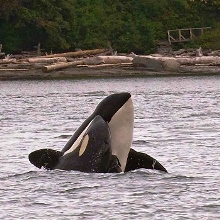
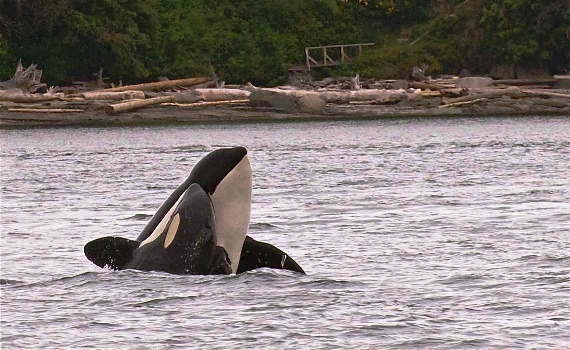

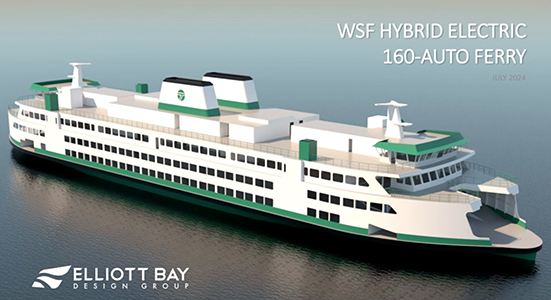

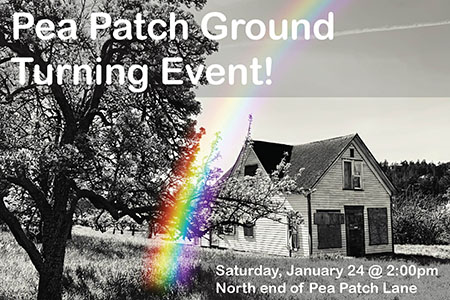
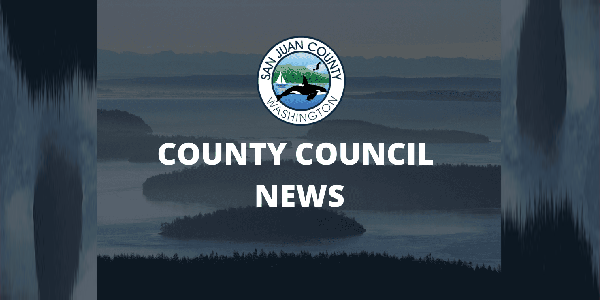


Margie, Thank you so much for your very detailed account of the hearing. As one who could not be there, I want you to know how extremely important your reporting is, and how very much I appreciate it.
I look forward to your next article about the Snug-Harbor-Mitchel Bay testimony. In it, could you please include the meaning of the designation PMT.
Thanks Jean, sorry I forgot to add the acronym PMT when I first mentioned the Port Marine Transportation designation. Margie
Forget the SMP, that is a GREAT picture of mama and baby Orcas !!!
Grest reporting for those of us who could not attend, Margie; thanks.
As mentioned in an update, the end of the comment period for the SMP was extended from November 30 to December 8. I hope people will share how important our shorelines are to us. Any serious plan to increase economic development must consider that our shorelines and the creatures inhabiting our waters ARE our draw for the tourist economy. Protection is critical to keeping quality of life here.
woops. that first word was supposed to be “Great.”